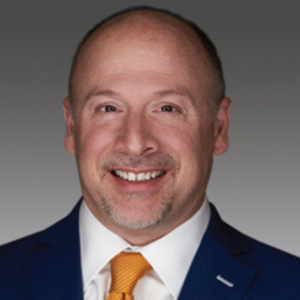Update: Hazardous waste risks
Pharmaceutical and hazardous wastes are ever-present management challenges for long-term care (LTC) administrators. They are regulated by several federal, state, and even local authorities. Consequently, organizations must be rigorous in their compliance with regulations. While often the business entity is fined for noncompliance, senior managers must be vigilant since they are ultimately responsible and violations at their facilities could affect financial performance and the organization’s reputation in the community.
Also, the responsibility for hazardous pharmaceuticals extends beyond the time that they are under the direct control of the organization and continues through to their destruction. This responsibility covers more than just controlled drugs; it includes hundreds of items such as coumadin and insulin, nicotine patches, and certain supplies. Pharmaceutical and hazardous wastes are an unavoidable part of doing business. It happens any time a product is no longer able to be consumed for its intended use. Common LTC causes include:
a change in a patient status results in medications left behind,
drugs or supplies are dropped or otherwise contaminated, and/or
empty containers of specific items (nicotine, coumadin) need to be gathered and managed as hazardous waste based on your state regulations and generator status.
In addition, even standard business supplies, such as fluorescent lamps, electronic equipment, and batteries, are classified as universal or hazardous waste depending on your state’s regulations.
Consequences for noncompliance can be severe. Last year the State of New York reached settlements, which included fines, with two hospitals and three nursing homes that dumped pharmaceuticals into a watershed that supplies nine million people. The organizations were fined and had to implement waste management programs that comply with New York and federal waste management and clean water regulations.
Perhaps equally devastating is the potential effect on an organization’s funding. The Centers for Medicare & Medicaid Services (CMS) reviews LTC facilities’ compliance with applicable laws, including environmental rules, when it conducts due diligence during funding reviews.
REGULATORY DEVELOPMENTS
Staying in compliance is a challenge because regulations are constantly evolving. Here are a few developments that are in process:
President Obama signed the Safe Drug and Disposal Act of 2010 last September to address controlled drug disposal. Under previous rules, controlled pharmaceuticals, such as morphine or oxycodone, could only be disposed of through witnessed flushing-bad for the environment and banned in many jurisdictions-or by turning them over to an authorized law enforcement representative (an inefficient disposal mechanism). The Drug Enforcement Administration (DEA) held public hearings in January and will be issuing rules in 2011 on retrieving these types of items from end users, including LTC facilities, in order to reintroduce these controlled substances back into the DEA domain.
The U.S. Environmental Protection Agency (US EPA) Office of Water released a best-practices document in September 2010, with a comment period that ended in November. More than 90 responses were received and it is likely the EPA will have another comment period prior to finalizing their best practices recommendations. Pay attention to this document since the EPA’s Best Practices can become rules.
The EPA Office of Solid Waste is reclassifying hazardous pharmaceutical wastes under Universal Waste (UW) Rule 40, probably adding pharmaceuticals that are currently classified as hazardous wastes under the Resource Conservation and Recovery Act to the UW list. This change may be finalized this year.
Several states are also active in regulating pharmaceuticals and may or may not adopt the federal rules. Some have “Do Not Flush” laws prohibiting healthcare institutions, including LTC facilities, from discharging unused medications into wastewater systems. Minnesota has regulations requiring LTC facilities to develop and implement pharmaceutical gathering and disposal programs. The state has developed an online portal for LTC facilities that lists the specific wastes and the rules governing their disposal located at www.mntap.umn.edu/healthcarehw/LTCF/Index.html. This site is instructive even for facility administrators in other states.
HAZARDOUS MATERIALS MANAGEMENT BASICS
Staying in compliance is a challenge because regulations are constantly evolving.
The challenge for LTC administrators is to comply with every applicable regulation. The first step in hazardous waste management is to assign an environmental health and safety or regulatory compliance officer who is tasked with researching and putting a solution in place for the facility. He or she must be given the authority to develop and enforce policies. The controlled substances and hazardous materials management function can be delegated, but regulatory compliance responsibility remains with the top officers.
The compliance officer must develop a formulary for every medical, pharmaceutical, and hazardous material that enters the facility so that the staff knows how to handle, store, and dispose of the materials. Often the formulary may be obtained from the pharmaceutical supplier. Once the formulary is completed, different waste stream containers must be deployed and collection and disposal streams established.
Although the objective is to keep things simple, training is required for nurses and other frontline staff, including maintenance personnel. The disposal process for each stream also requires certified haulers that are equipped to handle the materials, and just as important, know the regulations and reporting requirements. Generally, three disposal streams must be organized:
DEA-controlled substances that under current regulations must be returned to law enforcement or flushed (if allowed). This may change when the DEA creates the process later in 2011.
DEA-controlled substances that are inventoried. They can probably go back to a reverse distributor for crediting if the items have value.
Hazardous wastes, including hazardous pharmaceuticals, must be segregated and picked up by a waste disposal company for incineration at a hazardous waste incinerator. Some states allow Certified Exempt Small Quantity Generators to ease management of these items. It is generally best to package and dispose nonhazardous, noncontrolled materials with the hazardous pharmaceuticals. This is not more costly since it eliminates the need for healthcare staff to separate the materials.
OUTSOURCED SOLUTIONS
For many institutions, delegating these tasks to qualified contractors enables them to take advantage of partners’ regulatory expertise and operational infrastructure. They can be responsible for keeping up with regulatory developments, creating the formularies, setting up the collection process, training the staff, and maintaining the necessary records. This relieves in-house staff from having to develop the expertise and reduces the organization’s liability.
Service providers such as my company, Clean Harbors, specialize in managing pharmaceutical and hazardous waste. Look for a service provider with specific LTC facilities waste management experience that will design custom services aligned with your pharmacy and patient care procedures in terms of collection frequency, process design, security, and other matters. Make sure that your provider has the training resources to support your employees and institution.
The best approach is to have the removal company provide the waste collection container systems in the pharmacy and patient care areas. They also can collect waste materials directly from the containers on the floors during scheduled service visits. This completely frees in-house staff from the collection process. Finally, many service contractors provide online “cradle-to-grave” reporting enabling easy access to documentation during audits and other reviews.
THE BOTTOM LINE
Pharmaceutical and hazardous waste management is critical to the successful operation of any LTC facility. It is necessary to assign the required staff, do the training, and make sure that the process is well-documented and effective. Regulatory agencies are beginning to look beyond the largest generators and are now focusing on the greater number of smaller generator healthcare institutions. You must pay attention. The risks are high and getting higher all the time.
John Kelsey, MS, is Vice President of Healthcare at Clean Harbors. Clean Harbors provides additional information that points to a number of U.S. and Canadian federal resources, as well as state and provincial regulatory websites. Visit
www.cleanharbors.com/customer_resources/regulatory_information.html to learn more. Long-Term Living 2011 May;60(5):40-41
I Advance Senior Care is the industry-leading source for practical, in-depth, business-building, and resident care information for owners, executives, administrators, and directors of nursing at assisted living communities, skilled nursing facilities, post-acute facilities, and continuing care retirement communities. The I Advance Senior Care editorial team and industry experts provide market analysis, strategic direction, policy commentary, clinical best-practices, business management, and technology breakthroughs.
I Advance Senior Care is part of the Institute for the Advancement of Senior Care and published by Plain-English Health Care.
Related Articles
Topics: Articles , Operations , Regulatory Compliance











